Click Below to Skip Ahead
The Amstiff is a rare crossbreed of an American Staffordshire Terrier and a Mastiff. Because they’re so uncommon, Amstiffs can vary significantly in size and color, and their temperaments can vary depending on whether they take after an American Staffordshire Terrier or Mastiff more.
What we do know about Amstiffs is that they’re usually active and versatile dogs. They love to run around and explore, but they can also be relaxed couch potatoes. When they’re matched with the right owner and receive proper training, they have the potential to become some of the most loyal and loving companions.
Breed Overview
Height:
17–30 inches
Weight:
60–220 pounds
Lifespan:
9–15 years
Colors:
Apricot, black, blue, brindle, brown, fawn, red, white
Suitable for:
Active families, those looking for a low-shedding dog, single-family homes
Temperament:
Loyal & loving, intelligent, easy to train, friendly, gets along with other pets
Amstiffs usually grow up to be large or giant-sized dogs. They may be intimidating in size, but they’re gentle giants at heart. They usually love to play and run around, and they’ll equally enjoy lounging on the couch with their favorite people. Amstiffs are calm and confident, and they’ll love nothing more than hanging out with their family and enjoying new experiences together.
Amstiff Characteristics
Amstiff Puppies
Because Amstiffs are so uncommon, it’s unlikely you’ll find a breeder who breeds them consistently. You’re more likely to find Amstiffs at an animal rescue or adoption organization. Even then, you’ll probably find a mixed-breed dog with some American Staffordshire Terrier or Mastiff in their pedigree.
Amstiff puppies tend to be very playful and have a lot of energy. American Staffordshire Terriers in particular are high-energy dogs, so you can expect to spend a lot of time exercising your puppy. Amstiff puppies also bond through play, so it’s vital for them to spend time playing games and engaging in a variety of fun activities with their owners.
When raising an Amstiff puppy, puppy-proofing your home is a must. Amstiff puppies are inquisitive and can easily find their way into hard-to-reach places. They also grow quickly and can easily jump onto tables or reach food left on countertops. Because they have the potential to grow to a large size, they must start obedience training as early as possible. A misbehaving Amstiff puppy can cause significant damage to your home and possessions and must be trained to keep themselves and those around them safe.
Amstiff Origin & History
It’s unclear when the first Amstiff appeared. There are no Amstiff dog clubs, and Amstiffs aren’t officially recognized by any breed clubs or organizations. Therefore, very little is known about them. However, their parent breeds have been around for much longer. Mastiffs are an ancient dog breed with records of their existence predating the Roman Empire, while American Staffordshire Terriers started appearing in the 18th century. Much of our information about Amstiffs comes from the information we already know about American Staffordshire Terriers and Mastiffs.
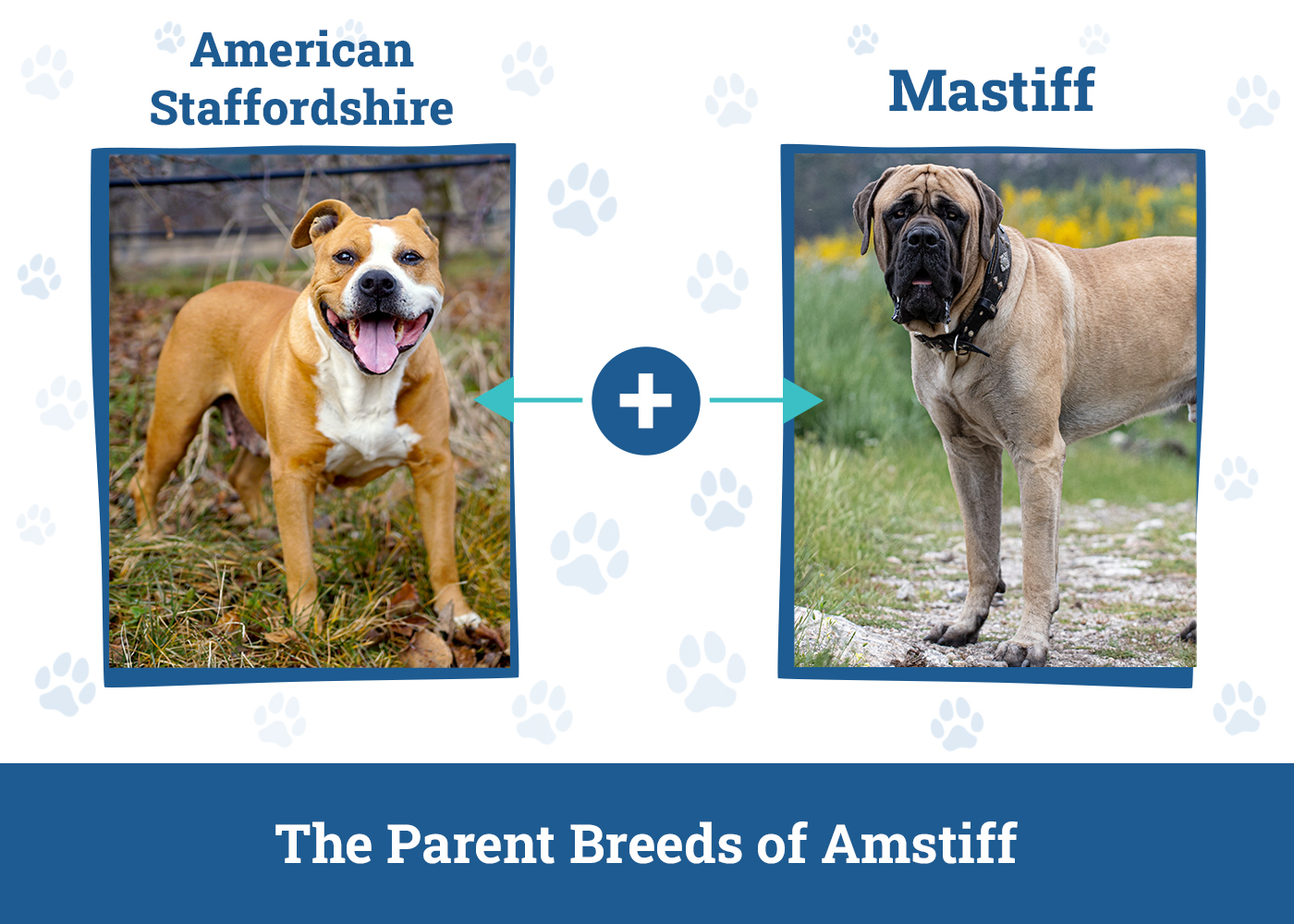
Temperament & Intelligence of the Amstiff
Amstiffs can grow to an intimidating size, but they’re actually good-natured, affectionate dogs. They’re extremely devoted and loyal to their families and usually form strong bonds with one or two of their primary caretakers.
When living with an Amstiff, you can expect to maintain an active lifestyle. Amstiffs have a lot of energy and are powerful dogs. They usually make excellent running and hiking companions, and they require adequate amounts of daily exercise to help them maintain a healthy body weight and prevent obesity.
While Amstiffs are usually easy going, they’re usually a better fit for experienced dog owners rather than first-time dog owners. Living with large dogs often requires significant lifestyle changes, and they require strong and firm owners who won’t back down or lose control when handling their dog.
Fortunately, Amstiffs are relatively easy to train. They’re intelligent and intuitive dogs that usually catch onto obedience training quickly. Amstiffs grow to become very loyal and are eager to please their owners after they’ve fully gained their trust.
Are These Dogs Good for Families? 👪
Amstiffs make good family dogs that are best suited for families with older children. While they calm down quite a lot when they reach adulthood, Amstiff puppies can be very energetic, and young children can feel overwhelmed by them easily.
Adult Amstiffs are known to be doting and patient with children in the family. They’re quite gentle, despite their large size and usually end up being protective companions.
Does This Breed Get Along With Other Pets? 🐶 😽
Amstiffs don’t mind being the only dog in the home, but they can get along with living with another canine companion. Investing in early socialization will help your Amstiff puppy develop positive associations with meeting other dogs and make it more likely for them to live with another dog.
When it comes to living with other kinds of pets, Amstiffs may have particular challenges if they inherit more American Staffordshire Terrier traits. American Staffordshire Terriers have a strong prey drive, and they may not be able to be around other animals unsupervised.
Things to Know When Owning an Amstiff
Food & Diet Requirements 🦴
Amstiffs are relatively healthy dogs, and most usually don’t require eating any specialty diets. Choosing dog food from a high-quality dog food brand will suffice for most adult Amstiffs. However, some exceptions may require your Amstiff to eat a special formula diet. For example, if your Amstiff is on the larger side, they may benefit from eating dog food specifically formulated for large-breed dogs. Amstiffs that are particularly athletic and active need to eat a high-protein diet. It’s also important to consider adding joint and mobility support supplements to your Amstiff’s diet as they age because they’re more susceptible to hip dysplasia and other joint issues.
The best way to determine the appropriate diet for your Amstiff is to talk with your veterinarian. Your veterinarian can consider your Amstiff’s health and lifestyle and recommend specific foods that would best fit their nutritional needs.
Exercise 🐕
Amstiffs are active dogs that should have at least 1 hour of daily exercise. Some forms of exercise that Amstiffs enjoy are daily walks, running off-leash in a fenced yard, and playing with dog toys. They’ll also enjoy hiking and other outdoor activities, which makes them the perfect weekend companions for road trips, camping, and other outdoor adventures.
Training 🎾
Training Amstiffs is essential because of their large size. Untrained and unruly Amstiffs can quickly become a liability, even if they’re not aggressive. They’re capable of causing significant property damage, and bored Amstiffs are susceptible to destroying furniture and engaging in other destructive behaviors.
Amstiffs are intelligent dogs that respond well to positive training techniques. Scheduling short training sessions frequently throughout the day will keep Amstiffs interested and help them remember and retain what you’re trying to teach them.
Grooming ✂️
Amstiffs have short hair and are moderate shedders, but they tend to shed more twice a year during shedding seasons. Amstiff hair doesn’t tangle easily, so you don’t have to worry about buying a variety of brushes to maintain their coat. However, they’ll still benefit from getting brushed weekly with a soft bristle brush. This will help pick up loose and dead hair from their coat and maintain shedding around the house. Brushing will also help distribute natural oils throughout the skin and keep the skin and coat moisturized and healthy.
Amstiffs don’t require frequent baths and usually just need a bath when they start to smell or when their coat starts to feel too oily. Giving Amstiffs too many baths will end up damaging their skin and coat by drying them out and causing skin irritation, so make sure you use a high-quality shampoo when it does come to bath-time.
Most Amstiffs have long ears that can trap moisture easily. Moisture in the ears can lead to ear infections, so it’s important to check their ears regularly. Cleaning out their ears with an ear cleanser once a week can help keep their ears dry and prevent infections.
Health and Conditions ❤️
Amstiffs are healthy dogs, but they tend to have shorter lifespans than the average dog due to their large size. As they start to age, they may start to develop specific health issues that are commonly found in American Staffordshire Terriers and Mastiffs.
Amstiffs may start to develop hip and joint issues due to their large size. So, it’s important to consult your veterinarian to determine when it’s a good time to add joint health supplements to their diet. Amstiffs also have a higher risk of bloat. Monitoring their eating habits can help immensely with reducing the risk.
- Hip and elbow dysplasia
- Luxating patella
- Skin allergies
- Obesity
- Bloat
- Cancer
Male vs Female
As Amstiffs don’t have breed standards for appearance and temperament, there are no consistently known differences between female and male Amstiffs. Males have the potential to grow larger and weigh more than females. However, size can also be affected by genetics, and Amstiffs are more likely to grow to be a similar size as their parents. Overall, both female and male Amstiffs can become wonderful companion dogs, so it’s best to choose one based on their individual personality and temperament rather than their sex.
3 Little-Known Facts About the Amstiff
1. Amstiffs come from a line of war dogs.
Mastiffs come from a long line of war dogs, and there are records of them being used for war and hunting by ancient Celts. American Staffordshire Terriers have a history of protecting American settlers and being used as war dogs in the Civil War and World War I. It comes as no surprise that Amstiffs are also brave and confident, and they have strong natural instincts to protect their families.
2. Amstiffs are people-oriented.
While Amstiffs can get along with other dogs, they prefer being around people. They seem to have more fun playing with humans rather than dogs, and they’re perfectly content accompanying their favorite people from place to place.
3. Amstiffs are strong chewers.
Both American Staffordshire Terriers and Mastiffs have a strong set of jaws, and they can be mouthier than other dog breeds. They love to chew and can easily break apart a chew toy and shred plush toys. They definitely need durable toys specifically designed for heavy chewers and must be supervised at all times when playing with a toy or gnawing on a dog chew.
Final Thoughts
Amstiffs are big dogs with sweet personalities. They’re well-suited for experienced dog owners who know how to train large dogs and keep them safe. They’ll also enjoy being a part of an active family who can frequently take them outdoors to explore the world around them. Amstiffs are calm and confident dogs, and they develop strong bonds with their family members. They may be a bit choosy with their people, but once you earn their trust, you’ll find yourself with one of the most loyal and doting dogs you can find.
Featured Image Credit: Eric Isselee, Shutterstock






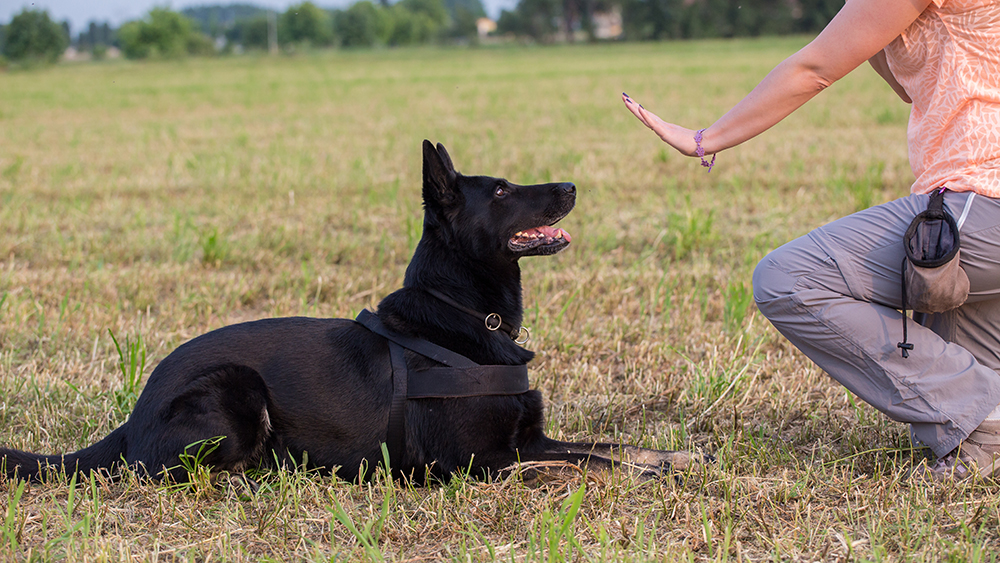

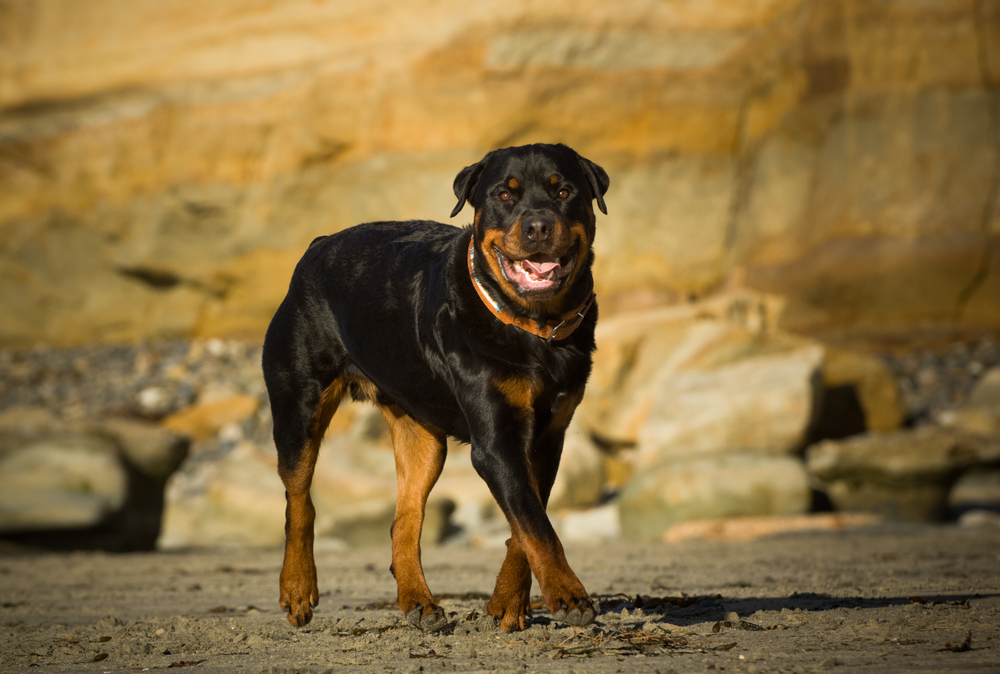


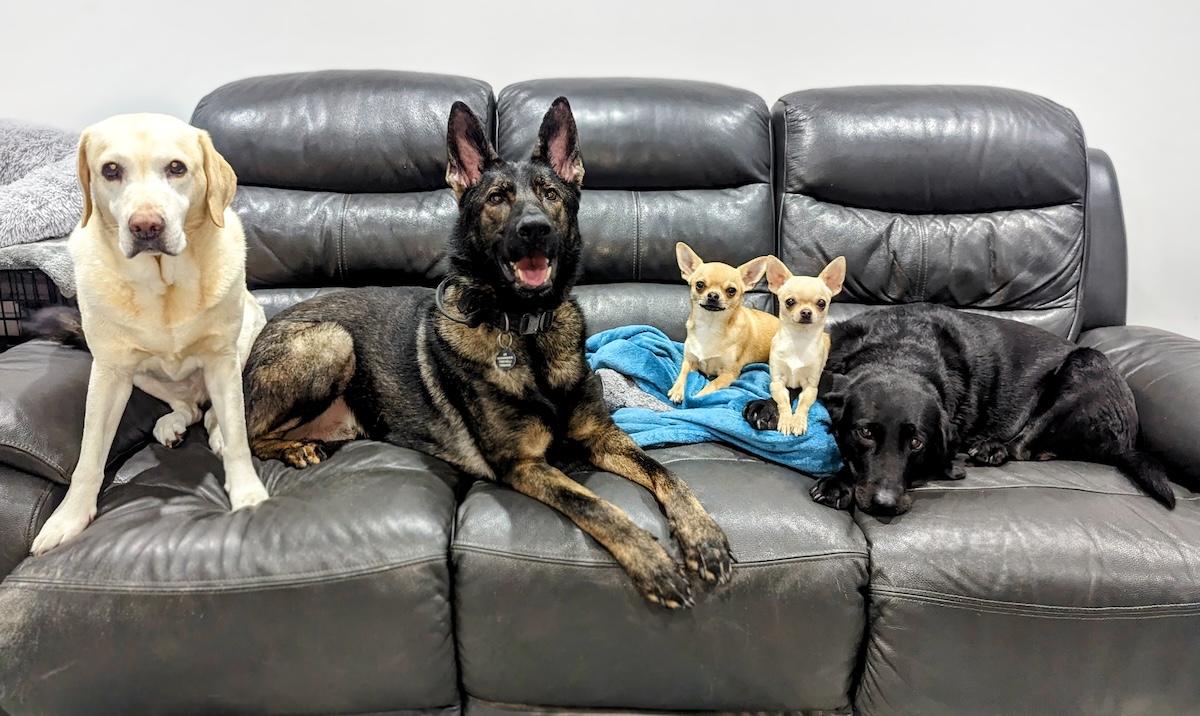
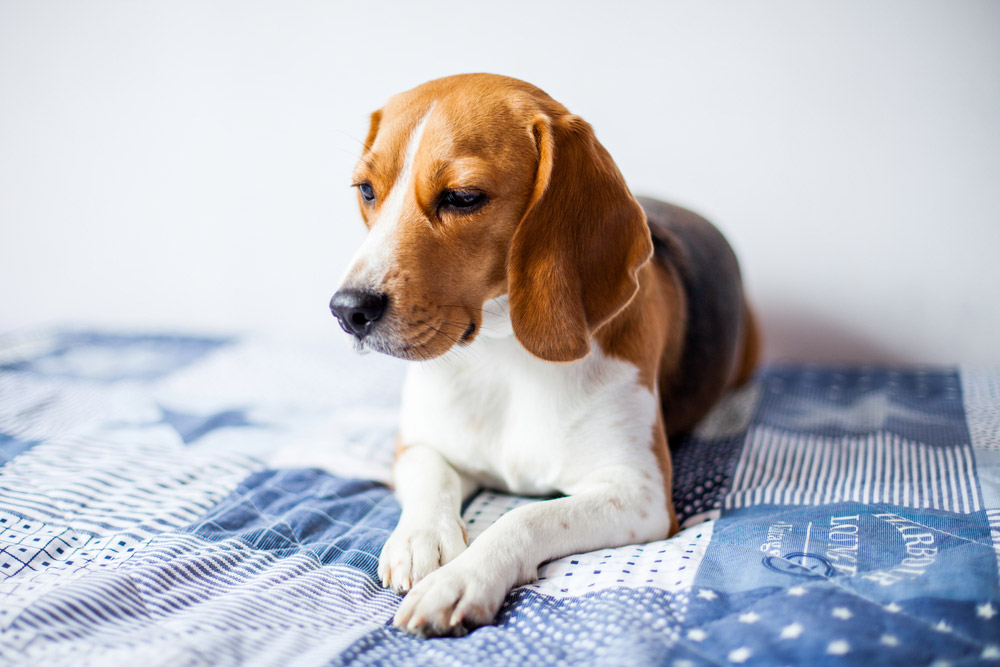


My Amstaff was a couple weeks old when I got him and he's 3 years old now and a great dog most of the time. There has been 2 times that he picked up a tiny old dog and gently shock it and put it down and then the 5,lb shouldn't be call a dog didn't make it. I don't think he was trying to hurt it or what happened but he is the best dog I've ever had. He loves to play fetch so much that he throws the ball or toy to you and will play fetch with a small red brick the size used for fence or house's or a rock anything that fits in his mouth. Lol